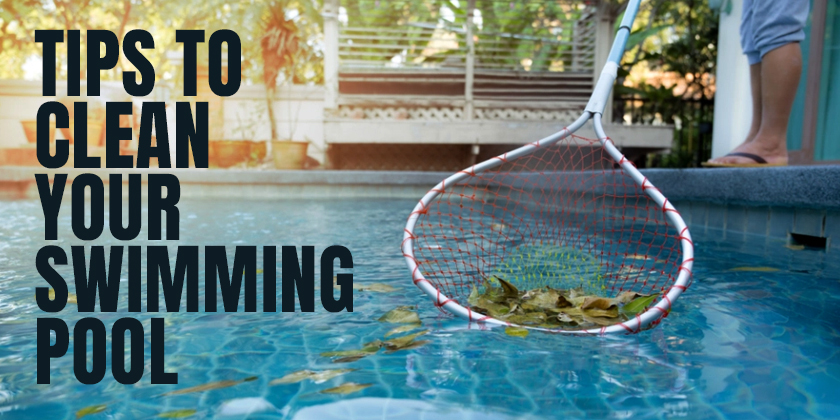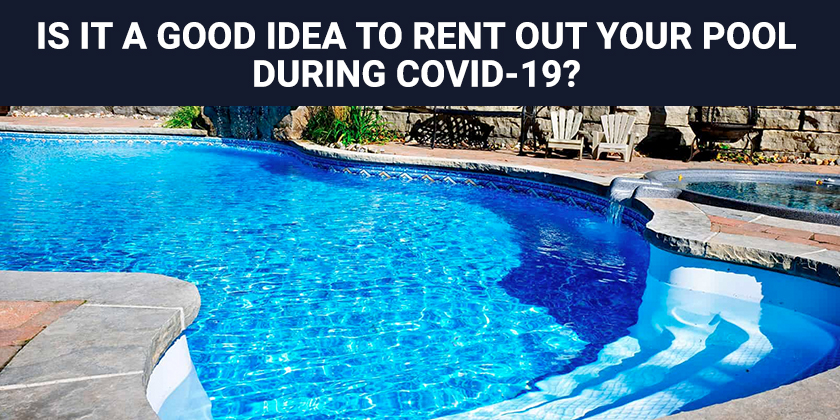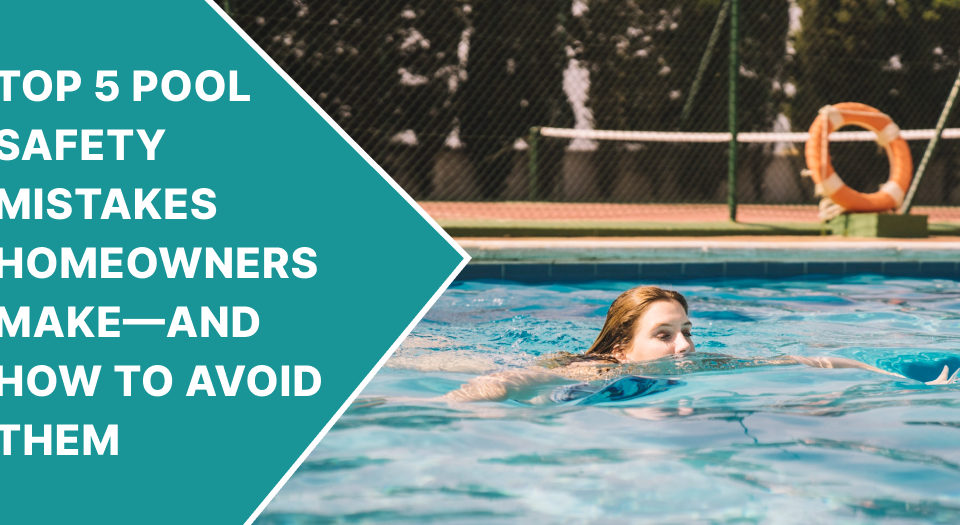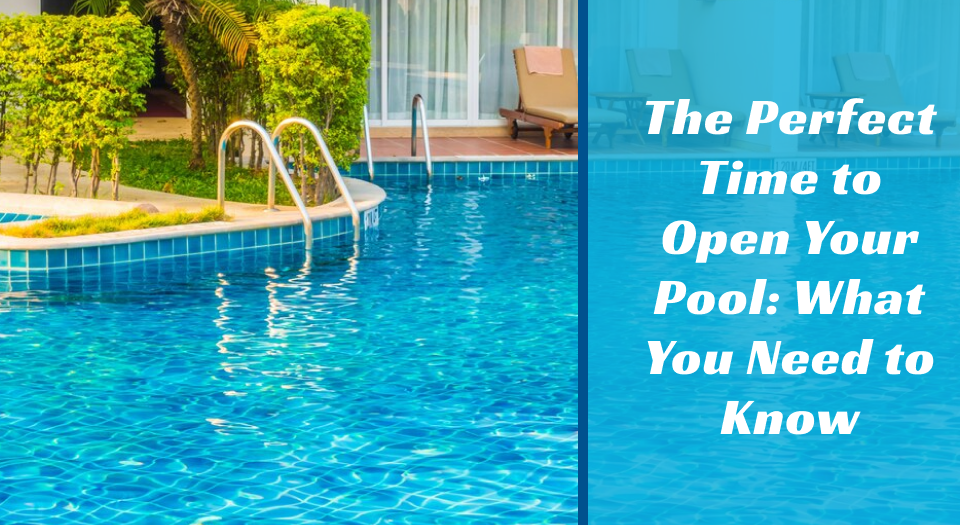
How To Clean Your Swimming Pool?
June 13, 2020
Should You Rent Your Swimming Pool During COVID-19?
July 15, 2020As swimming pool facilities have opened up in some areas, the CDC has regulated some considerations for the safety of people who operate, manage, and use public pools, hot tubs, and water playgrounds.
The operators of public swimming pools are required to consult with local officials to discuss the guidelines to operate the aquatic venues.
Here are some of the recommendations that every public aquatic venue needs to follow:
Promote behaviors to prevent the spread of COVID-19
Public swimming pool authorities need to consider strategies to encourage healthy hygiene, including:
Hand washing – All staff, patrons, and swimmers must wash their hands whenever necessary. They should wash their hands for at least 20 seconds with soap and water.
Wear a mask – As maintaining social distance is not possible in a public place, everyone needs to wear a face mask to prevent the spread of COVID-19. Use tissue paper to cover your cough and sneeze. Remember, not to wear a mask while swimming as it will get hard for you to breathe through a wet mask.
Stay home – Whether you’re a staff, patron, or swimmer, stay at home if you show any symptoms of COVID-19, have tested positive for COVID-19 or were exposed to someone with COVID-19 infection.
Adequate supplies – To support healthy hygiene, swimming pool authorities must ensure to have enough supplies including soap, hand sanitizer with at least 60 percent alcohol, paper towels, tissues, and no-touch trash cans.
Signs and messages – Post signs about how to stop the COVID-19 spread, wash hands properly, maintain social distance, wear a face mask, and other preventive measures in highly visible locations. Also, set regular broadcast announcements about how to stop the spread of the coronavirus.
Maintain Healthy Environments
To maintain healthy environments, operators of public aquatic venues must consider the following measures:
Cleaning and Disinfection – Use EPA approved disinfectant for cleaning and disinfecting highly touchable objects such as:
- Handrails, door handles, slides, and pool fences
- Pool noodles, lounge chairs, tabletops, and kickboards
- Surfaces of restrooms, handwashing stations, diaper-changing stations, and showers
Ensure safe and correct use and storage of disinfectants, including storing products securely away from children.
Ventilation – Ensure your ventilation systems properly work. The SPA can open doors and windows or fans for proper circulation of outside air. However, do not open windows and doors if there is a potential risk to staff, patrons, or swimmers.
Water Systems – Ensure that water systems such as drinking fountains, hot tubs, and decorative fountains, etc. are safe to use after a prolonged facility shutdown. It is necessary to minimize the risk of Legionnaires’ disease and other diseases associated with water.
Modified Layouts – Set up seating and standing areas by keeping social distance maintenance guidelines in mind.
Physical Barriers and Guides – The SPA must provide physical cues or guides, visual cues, and signs to ensure that staff, patrons, and swimmers stay at least 6 feet apart from those they don’t live with, both in and out of the water.
Shared Objects – Encourage people to bring their towels, food, toys, and other things that are difficult to clean and disinfect. The objects include nose clips, goggles, and snorkels, etc. Also, ensure the supply of adequate equipment to limit their usage by one group of users at a time. Additionally, make sure workers get enough time to clean and disinfect equipment before
using them again.
Maintain Healthy Operations
These are some of the CDC recommended guidelines for swimming pool authorities to maintain proper operations at public swimming pools:
Protect for vulnerable staff – Offer options such as work from home or modified job responsibilities to reduce their risk of getting infected. Limit your aquatic venue use to only swimmers, patrons, and staff who live in the local area, if feasible.
Lifeguards and water safety – Assign a different staff member to monitor activities of people such as hand washing, using a face mask to cover the face, or maintaining social distancing, etc. Lifeguards will not be responsible for monitoring such activities.
Regulatory awareness – Contact local or state regulatory agencies to know about policies or recommendations for organizing events such as aquatic fitness classes, swim lessons, swim team practice, swim meets, or pool parties.
Staggered or Rotated Shifts – Limit your staff at a time with the help of staggered or rotating shifts.
Designated COVID-19 point of contact – Designate a team who’ll be responsible for responding to COVID-19 concerns. All staff must be aware of this team and how to contact them.
Gatherings – The SPA should avoid group events, gathering, or meetings both in and out of the water if social distancing of at least 6 feet between people who don’t live together cannot be maintained. Limit entry to any nonessential visitors, volunteers, and activities that involves external groups or organizations. The social distancing guidelines are not applicable if:
- Anyone is rescuing a distressed swimmer, providing first aid, or performing cardiopulmonary resuscitation.
- Individuals are in the process of evacuating an aquatic venue in case of an emergency.
Communication Systems – Staff, swimmers, and patrons should self-report if they show signs of COVID-19, are COVID-19 positive or were exposed to a COVID-19 patient within the last 14 days.
- The swimming pool authorities should notify local health authorities about COVID-19 cases.
- They should also notify everyone about aquatic venue closure.
Staff leave policies – The swimming pool authorities should implement flexible and non-punitive sick leave policies for staff. They should also develop return-to-work policies aligned with CDC’s criteria to discontinue home isolation.
Staff Training – The SPA should conduct a training session on all safety protocols and must ensure to maintain social distancing during in-person training.
How to prepare when someone gets sick?
If someone gets sick, operators of public aquatic venues may consider:
- Immediately separating staff, patrons, or swimmers with COVID-19 symptoms from others. Then isolating and transporting sick people to their home or a healthcare provider.
- Immediately notifying local health officials, staff, patrons, and swimmers of any case of COVID-19. Don’t forget to maintain confidentiality as per the Americans with Disabilities Act (ADA).
- Informing people who have had close contact with COVID-19 patient to stay home and self-monitor for symptoms, and follow CDC guidance if symptoms develop.
- Closing off the area used by a sick person and not using the areas until after cleaning and disinfecting them.
- Wait for at least 24 hours before cleaning and disinfecting these areas. Also, ensure to use EPA approved disinfectant.
So if you’re planning to open your swimming pool for the public, we recommend you consider the CDC approved guidelines for everyone’s safety.




